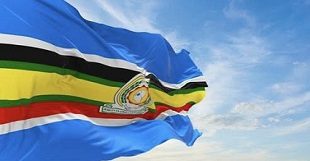
The dream starts
Sembuya says they got the idea of adding value to cocoa way back in 2009 but first had to research several aspects of the business; for instance on the market. He says, however, they were only able to go into production in 2014.
Apart from chocolate, other products Pink Foods Industries produces are cocoa butter, drinking chocolate, and cocoa beans for export.
Sembuya and Okoye say the views many people have about chocolate are misperceptions.
“Many people say they can’t afford chocolate because they have not entered a supermarket to buy a chocolate bar but if one eats cakes then you know you are indirectly eating chocolate because it one of the ingredients,” he says.
They explain that chocolate does not have to be expensive.
“People say chocolate is a luxury because of the cost,” Okoye says. He says the reason for the high price is because Uganda, and most cocoa growing African countries, have been exporting unprocessed cocoa beans to Europe and importing chocolate from countries like Switzerland at a high cost.
“Chocolate which is produced here should even be cheaper than bread,” Okoye says. He explains that, apart from the packaging materials, all raw materials they use to make chocolate at Pink Foods are locally produced unlike bread where wheat which is the main ingredient is imported.
Another likely success for Pink Foods chocolate is the emphasis placed on quality. In order to maintain quality of inputs, Pink Foods insists on buying cocoa pods fresh from the farm of their out-growers and processing them.
Okoye says they keep in touch with the farmers and, on a harvest day; move out with lorries, weighing scales, and containers, to collect the fresh cocoa from the farms. At the farms the cocoa pods are cut and the wet cocoa seeds with its pulp are weighed and the farmers paid on the spot.
Because they get fresh cocoa beans from the farmers, they calculate the pay at the ratio of 100 kgs of fresh cocoa to 30-40 kgs of what they would have paid if they were dry.
The ratio depends on the season which has an effect on the moisture content. Therefore, if a farmer supplies them with 100 kgs of fresh beans they pay them the equivalent of what they could have paid for 30-40kgs of dried beans.
Okoyo says although they buy fresh cocoa pods instead of dried beans, they ensure that the farmers get a fair price because they operate under the Fair Trade arrangement where they are supposed to pay competitive prices to farmers for their produce.
“Like for other products sold on the international market, we have to continuously be online to monitor the stock exchange to know what the prices international prices are,” Okoye explains.
From the farms, Sembuya explains that the cocoa beans are taken to the factory where the pulp is removed and they are put in wooden boxes for fermentation. This process usually takes about seven days.
After the fermentation the beans are put out to dry or using solar driers and this process takes between five to seven days depending on the weather. After this, the husks are removed from the brown beans which are then taken to the industry for processing depending on what product they want.
 The Independent Uganda: You get the Truth we Pay the Price
The Independent Uganda: You get the Truth we Pay the Price


